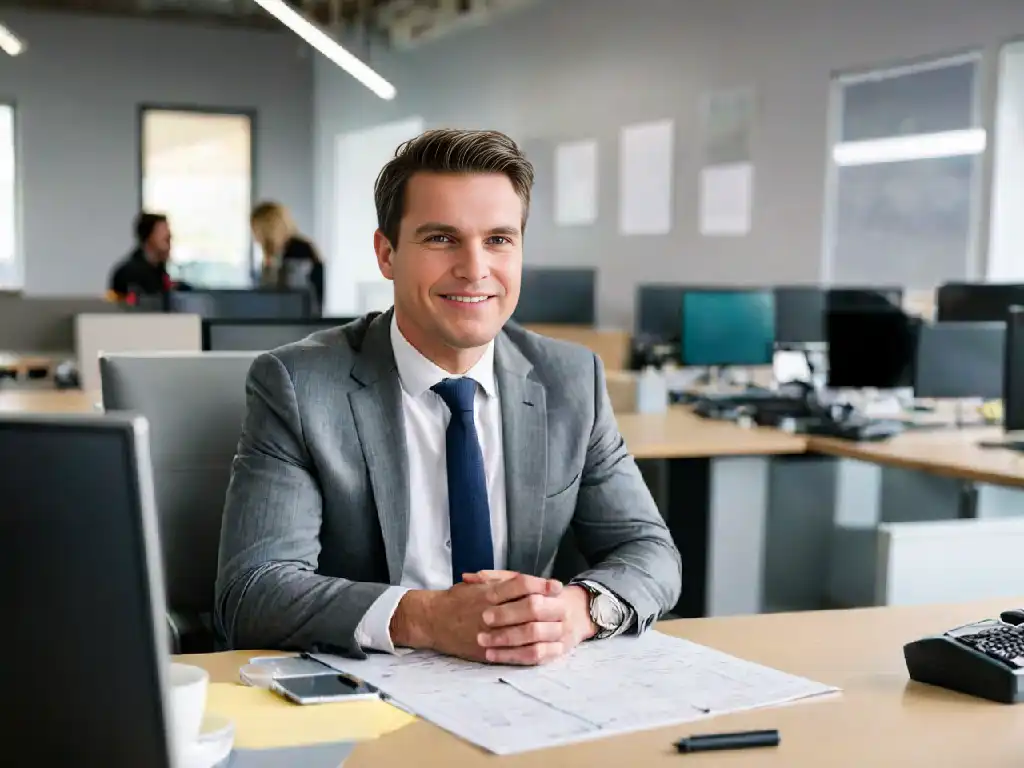Interview Questions for Graphic Designers (with Top Questions and Answers)
Mastering the Art of Job Interviews for Interview Questions for Graphic Designers: Job Interview Examples and Insights
Try Lark for Free
As the demand for skilled graphic designers continues to surge, the competition in the industry intensifies. Job interviews serve as crucial junctures where candidates can demonstrate their creative prowess, problem-solving abilities, and adaptability to prospective employers. This guide aims to equip aspiring graphic designers with the essential knowledge and strategies to excel in job interviews and leave a lasting impression on hiring managers.
What are hiring managers looking for in a graphic designers role?
Hiring managers seek specific attributes and competencies when evaluating potential graphic design candidates. The following are the key areas of interest for hiring managers seeking graphic designers:
- Creativity and Innovation: Candidates must showcase a strong capacity for creative ideation, originality in design concepts, and the ability to think outside the box.
- Technical Proficiency: Proficiency in industry-standard design software and a robust understanding of design principles, typography, and color theory are highly valued.
- Adaptability and Collaboration: Candidates should demonstrate flexibility to adapt to evolving project requirements and the ability to collaborate effectively with cross-functional teams.
- Strong Portfolio: A compelling portfolio that showcases diverse projects, style versatility, and a strong aesthetic sense is essential to demonstrating a candidate's capabilities.
Use Lark for video interviews and candidate tracking.
How to prepare for a graphic designers interview
Preparing for a graphic design job interview involves thorough research, meticulous portfolio curation, and strategic approach to practicing common interview questions. The following steps can guide applicants in effectively preparing for their graphic design job interviews:
Step 1: Understanding the Company and Its Culture
Before the interview, conduct in-depth research on the prospective employer, including their branding, design aesthetics, and recent projects. Understanding the company's culture and design ethos provides valuable insights for tailoring your portfolio and responses to align with their expectations and preferences.
Step 2: Preparing a Stellar Portfolio
Curate a comprehensive portfolio that encapsulates your best work, covering a range of design styles, project types, and creative approaches. Ensure that your portfolio showcases your ability to solve design challenges, adapt to diverse briefs, and deliver impactful visual solutions.
Step 3: Practicing Common Graphic Design Interview Questions
Devote time to practicing responses to common graphic design interview questions, such as describing your design process, discussing specific project inspirations, handling constructive criticism, narrating challenges in design projects, and staying updated on design trends and technologies. Incorporating real-life experiences and examples into your responses can bolster their authenticity and impact.
Top 5 interview questions for graphic designers and how you should answer them
"Describe your design process and workflow."
Why does this question matter?
Interviewers frequently ask this question to assess a candidate's approach to problem-solving, creative thinking, and project management within the design process.
What do they listen for in your answer?
- Structured methodology
- Iterative refinement and feedback incorporation
- Emphasis on user-centric design and storytelling
Sample answer
"I approach each design project with meticulous attention to both the client's objectives and the end user's experience. My process typically begins with comprehensive research to understand the target audience, industry context, and competitive landscape. This initial phase lays the foundation for ideation, where I prioritize creativity and originality, often sketching out multiple concepts before refining the most promising ones. Feedback loops and iteration play a significant role in my workflow, ensuring that the final design resonates with its intended audience and fulfills the client's objectives."
"Can you walk us through your portfolio and the inspiration behind specific projects?"
Why does this question matter?
This question allows interviewers to delve into the creative rationale behind a candidate's work, gauging their ability to introspect and articulate design decisions effectively.
What do they listen for in your answer?
- Connecting personal experiences to design inspiration
- Explaining thought process and design journey
- Demonstrating adaptability across diverse projects
Sample answer
"Let me take you through a recent project where I had the opportunity to design a brand identity for a sustainable lifestyle startup. The inspiration stemmed from my fascination with natural elements and minimalism, which translated into a clean and versatile visual identity for the brand. Every aspect of the design, from the color palette to the typography, was thoughtfully crafted to evoke a sense of eco-friendly modernism. Drawing from nature's organic forms and sustainable values, the project aligns with my belief in visually narrating a brand's ethos and purpose."
"How do you handle constructive criticism in your design work?"
Why does this question matter?
This question aims to gauge a candidate's ability to accept feedback, adapt to evolving design requirements, and exhibit a growth-oriented mindset.
What do they listen for in your answer?
- Openness to feedback and continuous learning
- Demonstrating adaptability without compromising creativity
- Maintaining professionalism and receptiveness
Sample answer
"I view constructive criticism as an invaluable resource for growth and improvement in my design practice. Whenever I receive feedback, I make a conscious effort to adopt a receptive mindset, seeking to understand the perspective behind the critique and the underlying objectives it aims to address. Embracing feedback not only enhances the quality of my work but also fosters a collaborative environment where every critique becomes an opportunity to refine ideas and solutions."
"Share a challenging design project you worked on and how you overcame obstacles."
Why does this question matter?
This question assesses a candidate's problem-solving abilities, resilience, and creative adaptability in navigating challenging design scenarios.
What do they listen for in your answer?
- Identifying complex design challenges and their solutions
- Illustrating perseverance and resourcefulness
- Emphasizing continuous learning and growth from challenges
Sample answer
"A particularly challenging project in my career involved the redesign of a user interface for a productivity app within stringent time constraints. The primary obstacle was reconciling the client's need for a visually engaging interface with the complexities of integrating additional features. To overcome this, I initiated a collaborative workshop with the development team, identifying feasible design iterations while maintaining the app's core functionality. This experience reinforced my capability to innovate under pressure and solidified my pragmatic approach to balancing aesthetics with usability."
"Discuss a design trend or technology that excites you and how you stay updated in the industry."
Why does this question matter?
Interviewers aim to evaluate a candidate's passion for design, inclination towards innovation, and commitment to staying informed about industry advancements.
What do they listen for in your answer?
- Genuine enthusiasm towards a design trend or technology
- Proactive efforts in staying updated
- Reflecting on the impact of trends in design practice
Sample answer
"I am immensely fascinated by the growing integration of augmented reality (AR) in user interface design. The potential for immersive user experiences and interactive storytelling through AR presents unparalleled opportunities for designers. To stay current in the industry, I regularly engage with design communities, attend industry conferences, and proactively explore emerging technologies. Embracing AR as a design medium aligns with my belief in leveraging technology to evoke meaningful user interactions and elevate design experiences."
Learn more about Lark x Employment
Do's and don'ts for graphic designers interviews
Effective preparation for a graphic design job interview encompasses not only the right steps but also an understanding of the do's and don'ts that can make a significant difference in leaving a positive impression. The following guidelines can assist candidates in steering their interview approach effectively:
Do's
- Showcase a diverse and impactful portfolio: Demonstrate versatility and depth in your portfolio to exhibit proficiency across varied design styles and project types.
- Research the company and tailor your portfolio: Customize your portfolio and interview responses to align with the company's brand aesthetics, design ethos, and project preferences.
- Prepare to discuss your design process: Be ready to articulate your approach to problem-solving, creativity, and user-centric design thinking through real project examples.
Don'ts
- Oversell skills or misrepresent experience: Avoid misleading representations in your portfolio or during the interview, as they can eventually lead to discrepancies in expectations.
- Be rigid in your design approach: Embrace feedback and demonstrate adaptability, showing openness to refining your design process and solutions based on constructive critique.
- Discuss negative experiences with previous employers or clients: Maintain professionalism and discretion by refraining from discussing adverse interactions during the interview.
Use Lark for video interviews and candidate tracking.








